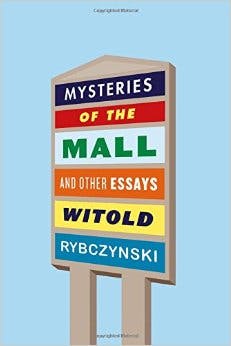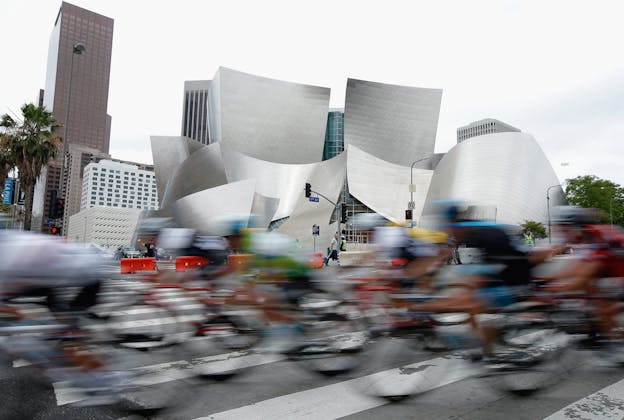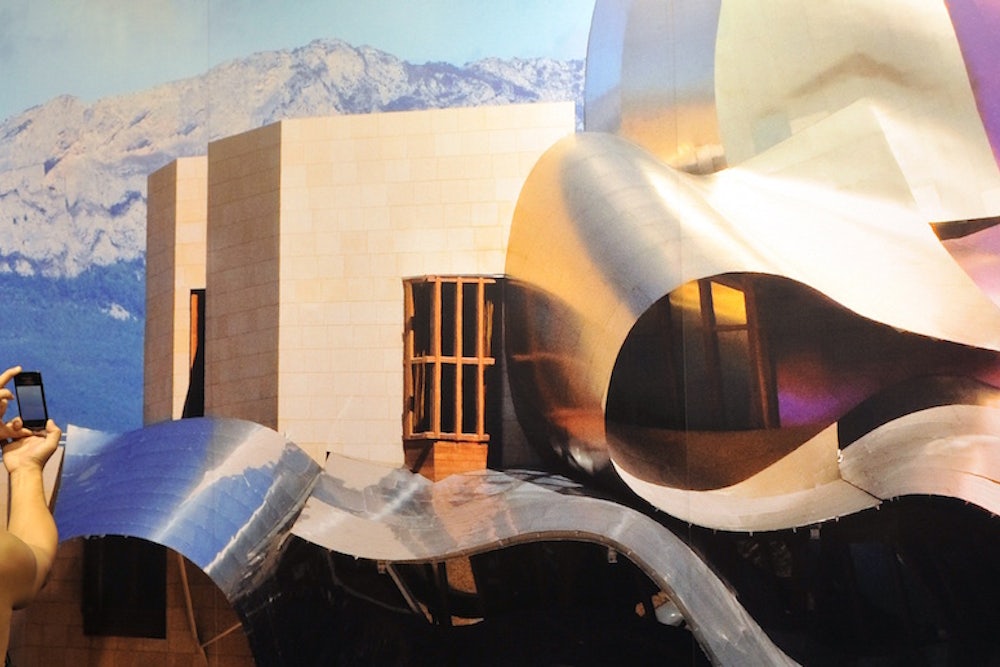I was raised in New York City, but it wasn’t until I moved to an earthquake-prone metropolis that I began thinking, daily, about buildings. Though I’ve been privy to some significant architectural narratives—as an adult, I witnessed my Brooklyn block sprout six condominiums as the borough was rebranded; as a teen a decade prior, I watched from a classroom window as the Twin Towers came down (these things are not, of course, the same)—the engineered landscape was such a fact of life that it never had a chance to hold much mystique. I don’t think that I’m alone in this. Architecture is fundamental to modern existence, but as a discipline it’s relatively removed from the mainstream culture. It’s so pervasive that it’s invisible.

Witold Rybczynski’s project, it seems, is to turn this trend around by examining the built environments of everyday life, and encouraging his readers to follow in kind. The author of 19 books and several hundred essays and articles, Rybczynski is an academic with a populist bent. His career has been characterized by a writing style that is accessible, lively, and full of wonder, with a clear appeal to the general reading public. His latest collection, Mysteries of the Mall, culls from essays that originally appeared in The New York Review of Books, The New York Times, The New Yorker, and other publications. The bulk of the collection dates back to the 1990s, with a smattering of pieces from the last fifteen years. The result is an informal account of some of the 20th century’s most influential architects and architectural movements in the United States, alongside ruminations on the shifting currents, trends, challenges, and contradictions of American cities.
Throughout the collection, Rybczynski’s writing is clear-headed and thoughtful, knowledgeable but unpretentious. Many of the essays exhibit an even-handed curiosity and delight, such as “Tomorrowland” (1996), a look at Disney’s then-nascent planned community of Celebration, Florida (a cheerful and vaguely utopian experiment in New Urbanism, which lives on as a fairly normal suburb), and “Call Arup” (2007), which emphasizes the uncelebrated but critical role of engineers. (The Arup in question is Ove Arup, a structural engineer and designer whose eponymous global firm is industry-infamous for taking on risky architectural projects.) Rybczynski favors humility, subtlety, and functionality in architecture; his tastes trend toward staid, quietly elegant buildings. He values imagination, but has little patience for the avant-garde, celebrity architects, vanity competitions, or spectacle. “Young architects such as Libeskind, Nouvel, and Koolhaas” he writes, are akin to “show dogs” who garner their reputations through competition-based work that is “refined and styled to the point of caricature.”
This critique is compelling, but it has its limits. “Art shows are eventually dismantled; buildings last for centuries,” Rybczynski writes. “That’s why architecture should be conservative in its instincts. The ‘wow factor’ may excite the visiting tourist and the junketing journalist, but it is a shaky foundation on which to build lasting value.” I’m not a huge fan of avant-garde architecture either, and the work of celebrity architects often goes awry for those who live amongst it—take the Frank Gehry-designed Disney Concert Hall, in LA (a building that Rybczynski does admire), which originally reflected sunlight so aggressively that neighboring apartments experienced a temperature increase, while drivers and passersby were blinded by the glare. Rybczynski is right to call out architects who submit designs for cities they have little relationship to, but work that favors experimentation—in aesthetics, in use, in design process—occupies a valuable space in the culture, too. “Lasting value” is subjective and arbitrary; it serves a culture well to explore its desires and curiosities, however eccentric, and expand beyond the mainstream comfort-zone.
Given his light conservatism and pragmatism, it makes sense that some of Rybczynski’s best work—including two books, The Most Beautiful House in the World and Home: A Short History of an Idea—focuses on domestic architecture and design, the psychological and aesthetic dimensions of residences. In this realm, his prose is occasionally romantic and whimsical; sometimes, it’s downright charming. In “Designs for Escape,” an essay in his new collection, Rybczynski recalls helping a friend design her weekend house. “Building a house for yourself is exciting,” he writes, “because of the feeling of possibility that a new house carries and because creating shelter is a basic human urge, whether or not you are an architect…. [A new house] tells you—and everyone else—‘This is how I live. This is what’s important to me. This is what I dream about.’” This is not a profound insight, but it illustrates the way in which architecture plays to the spirit and imagination, and it is deeply comforting.

The expansiveness of Rybczynski’s architectural appreciation is unfortunately undercut by an individual perspective that scans, at times, myopic. As a reflection of our culture—or, as the back-jacket copy states, “a deep exploration of modern life”—the collection unfortunately falls short. The book is broken up into four sections: “The Way We Live Today,” “Our Urban Condition,” “The Art of Building,” and “Place Makers.” In the title essay, originally published in 1994 and the first in the collection, Rybczynski deploys the collective first-person to address “the mundane architectural settings of our everyday lives”: public and prevalent spaces like gas stations, supermarkets, restaurants and movie theaters. “As adults,” he writes, “we feel more or less at home more or less everywhere…. It is rare that we find ourselves in places that are truly incomprehensible.” Comprehension is one thing. Comfort—the feeling of being “at home” in a public or collective space—is another. I’ll hardly be the first to point out that the mundane environments of everyday life can be fraught and inhospitable for a great number of people: built environments—particularly collective spaces—are never neutral.
Rybczynski continues this train of thought by addressing the matter of less-visible spaces: “television and movies have brought us in contact with so many places we would never ordinarily visit: prisons, morgues, missile silos.” I’ll give him the morgues and missile silos, but more than 2 million people are incarcerated in the United States. For these individuals—and their families and friends, not to mention those employed by the prison industry—prison is not extraordinary, nor does it exist solely as fictive representation. (For those interested in where these two topics overlap beyond entertainment, Norman Johnson’s Forms of Constraint is a thorough, thoughtful history of prison architecture.) The essay doesn’t hinge on these statements, but it nonetheless introduces Rybczynski as a narrator and guide whose ponderings can be rarified and out of touch. The camaraderie of the collective first-person deteriorates.
While Rybczynski writes beautifully about the home, and about the structural and aesthetic dimensions of buildings themselves, his writing is less compelling when it comes to more sociological questions of urban planning, policy, and society. In “Downsizing Cities” (1995), Rybczynski argues that a solution for cities with decreasing populations is to “consolidate those neighborhoods that are viable.” Rather than stretch a city’s public services across low-density neighborhoods, “housing alternatives should be offered in other parts of the city, partly occupied public housing vacated and demolished, and private landowners offered land swaps…[in depopulated neighborhoods] all municipal services should be cut off.”
Needless to say, such consolidation—often referred to as “planned shrinkage,” a term coined in 1976—is highly controversial. It’s a pragmatic solution; from a fiscal or infrastructural perspective, it would solve a lot of problems. But it elides the human dimension of neighborhoods, “viable” or not, such as community networks, informal infrastructure, and the less quantifiable psychological repercussions of displacement, such as those around identity and agency. Rybczynski acknowledges that such policy would disproportionately affect people of color and people living under the poverty line, but his gesture to address this disparity is weak: “Much would depend on the ability of minority leaders to see that given the lack of real alternatives, abandoning half-empty neighborhoods is not necessarily a political defeat.” Perhaps I’m cynical, but it’s tough to imagine any city government executing on consolidation policy with respect, dignity, or compassion; passing the buck to minority leaders is not a solution.
Revisiting these articles in 2015, Rybczynski has written postscripts to his essays, a format that provides space for clarification, contextualization, and reflection. However, this largely seems like a missed opportunity. In the postscript that follows “Downsizing Cities,” Rybczynski makes note of several cities that have attempted to downsize or consolidate—Detroit and Flint, in Michigan, and Youngstown, Ohio—and acknowledges that so far, none of these have been success stories. As a follow-up this seems a bit lacking, when far more nuanced programs have emerged as alternatives to consolidation in the 20 years since the essay was published. For example: after Hurricane Katrina, the New Orleans Redevelopment Authority purchased 2,500 blighted properties—most of which were vacant lots—and now runs a land stewardship program that allows communities or individuals to maintain, own, and lease land for greening projects or personal use.
Buildings are intended to last, but culture and society are in constant flux. As a retrospective of sorts, Mysteries of the Mall is a fine compilation of Rybczynski’s work from the last two decades. Some of the strongest pieces in the book draw on architectural history, theory and ideas; the awe, appreciation and wonder that Rybczynski has for architecture can be infectious. But “The Way We Live Today” is not the way we lived in the mid-90s, and to suggest otherwise is to elide the depth and expansiveness of some of the most complicated, urgent, and interesting questions facing urbanism today.
